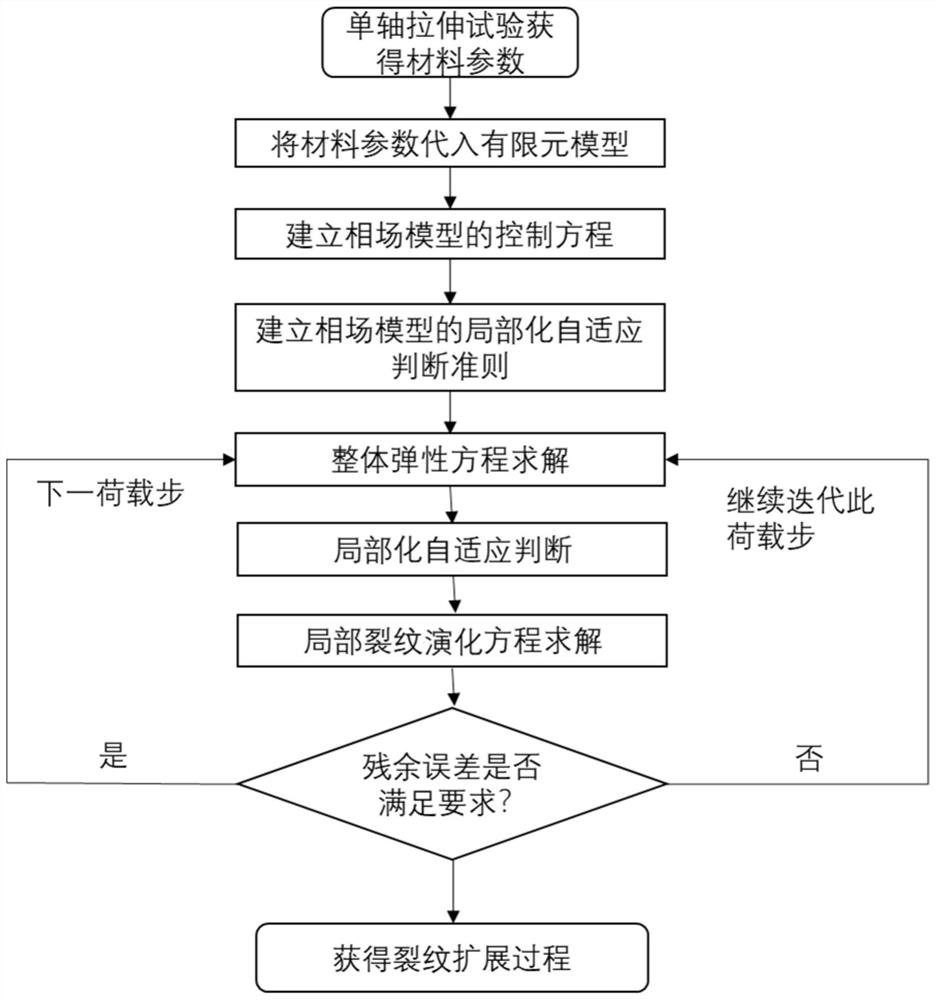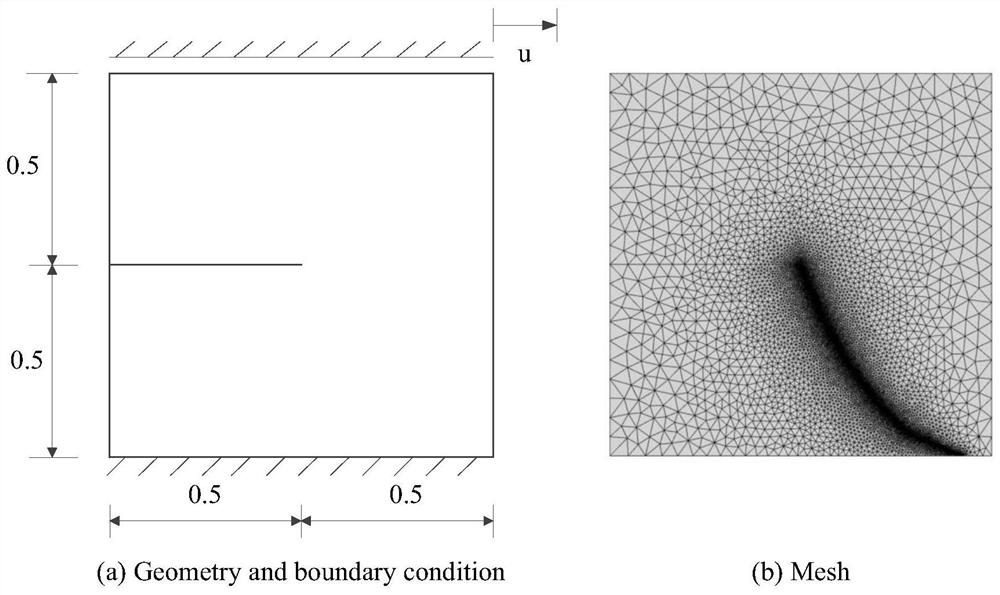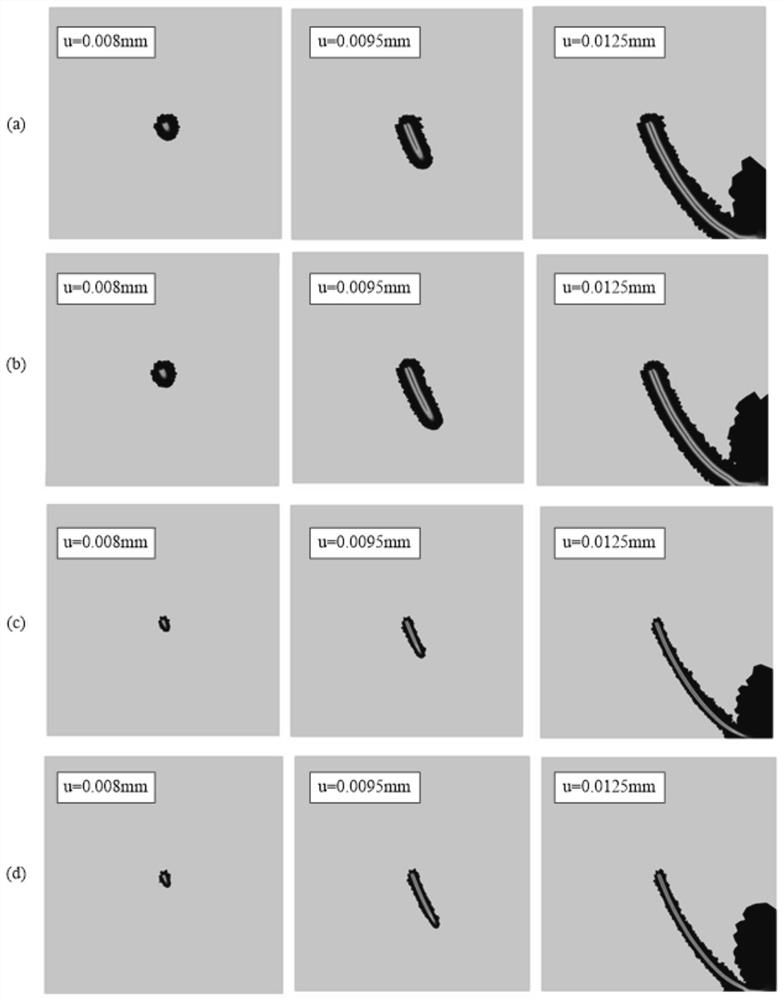Phase field model localization adaptive algorithm for simulating material cracking
A material simulation and localization technology, applied in the fields of computational mechanics and materials science, can solve problems such as reducing the amount of calculation, and achieve the effect of reducing the amount of calculation, strong practicability, and simple implementation process
- Summary
- Abstract
- Description
- Claims
- Application Information
AI Technical Summary
Problems solved by technology
Method used
Image
Examples
Embodiment
[0067] A Phase Field Model Localization Adaptive Algorithm for Simulating Material Cracking ( figure 1 shown), the simulation steps are as follows:
[0068] Step 1: Perform a uniaxial tensile test to obtain the material parameters required by the method, including the following parameters: (1) elastic modulus E=191.1GPa, (2) Poisson's ratio μ=0.183, (3) uniaxial tensile energy Release rate G c =2.7N / mm(4) Tensile strength f t =2445.42MPa;
[0069] Step 2: Use finite element software to establish a finite element two-dimensional or three-dimensional numerical model, substitute the measured material parameters into the established finite element model, and impose certain boundary conditions on the numerical model according to the actual failure process to be simulated. The boundary condition of the square plate is to impose fixed constraints on the lower boundary of the square plate, and to impose a horizontal and rightward constant velocity displacement on the upper boundary...
PUM
 Login to View More
Login to View More Abstract
Description
Claims
Application Information
 Login to View More
Login to View More - R&D
- Intellectual Property
- Life Sciences
- Materials
- Tech Scout
- Unparalleled Data Quality
- Higher Quality Content
- 60% Fewer Hallucinations
Browse by: Latest US Patents, China's latest patents, Technical Efficacy Thesaurus, Application Domain, Technology Topic, Popular Technical Reports.
© 2025 PatSnap. All rights reserved.Legal|Privacy policy|Modern Slavery Act Transparency Statement|Sitemap|About US| Contact US: help@patsnap.com



